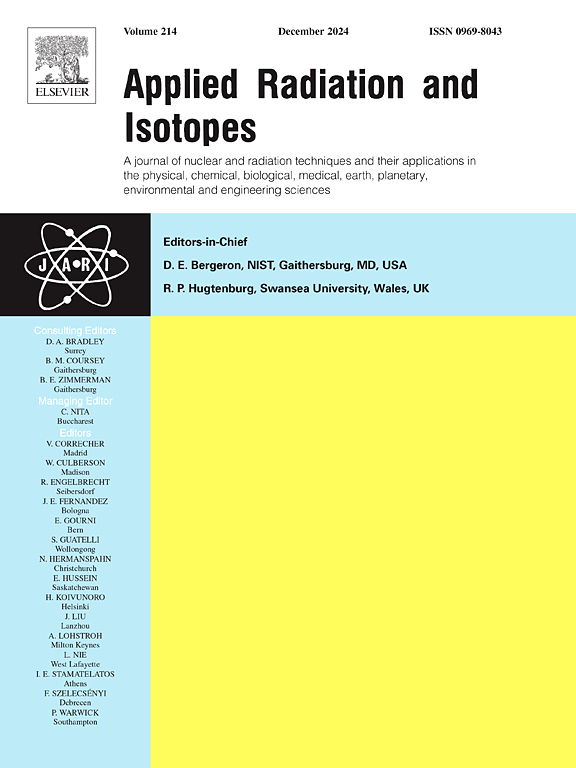Evaluating cosmic-ray backgrounds in HPGe gamma spectrometry: Experimental observations and GEANT4 simulations
IF 1.6
3区 工程技术
Q3 CHEMISTRY, INORGANIC & NUCLEAR
引用次数: 0
Abstract
This study demonstrates the efficacy of employing the GEANT4 simulation toolkit for investigating the background spectra of High Purity Germanium (HPGe) detector induced by atmospheric cosmic rays. GEANT4 is utilized to accurately replicate the experimental setup, detector geometry, and the gamma background spectrum for the HPGe detector. The EXPAC model is used to generate above-ground-level cosmic-ray particles for the terrain. Various techniques, such as the use of low-activity lead and oxygen-free copper as shielding materials, along with an external plastic scintillator to veto cosmic rays from the atmosphere, are employed to improve the signal-to-background ratio of HPGe detector systems. Photopeaks associated with 40K, 60Co, 232Th and 238U decay chain were observed in the measured background gamma spectrum. The integral count rates of the experimental and simulated background spectrum in the 20–1750 keV energy range were 1.92 ± 0.06 s−1 and 1.84 ± 0.14 s−1, respectively. The experimental and simulated background spectra match well, both qualitatively and quantitatively, indicating that GEANT4 is an effective simulation tool for predicting gamma spectra of HPGe detectors accurately.
求助全文
约1分钟内获得全文
求助全文
来源期刊

Applied Radiation and Isotopes
工程技术-核科学技术
CiteScore
3.00
自引率
12.50%
发文量
406
审稿时长
13.5 months
期刊介绍:
Applied Radiation and Isotopes provides a high quality medium for the publication of substantial, original and scientific and technological papers on the development and peaceful application of nuclear, radiation and radionuclide techniques in chemistry, physics, biochemistry, biology, medicine, security, engineering and in the earth, planetary and environmental sciences, all including dosimetry. Nuclear techniques are defined in the broadest sense and both experimental and theoretical papers are welcome. They include the development and use of α- and β-particles, X-rays and γ-rays, neutrons and other nuclear particles and radiations from all sources, including radionuclides, synchrotron sources, cyclotrons and reactors and from the natural environment.
The journal aims to publish papers with significance to an international audience, containing substantial novelty and scientific impact. The Editors reserve the rights to reject, with or without external review, papers that do not meet these criteria.
Papers dealing with radiation processing, i.e., where radiation is used to bring about a biological, chemical or physical change in a material, should be directed to our sister journal Radiation Physics and Chemistry.
 求助内容:
求助内容: 应助结果提醒方式:
应助结果提醒方式:


